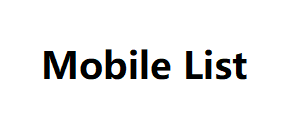The subscription business model seems to have found fertile ground in Brazil. An example is the number of subscription clubs currently available on the market. It is estimat that, in 2014, there were only 300 companies offering this type of service; in the year 2021, it is estimat that there were already more than 6 thousand signature clubs Mobile List in the country. However, according to an expert, the subscription model is still an industry with different levels of maturity, depending on the niche. This is because the content and streaming subscription segment can already be consider extremely mature, while other segments, such as car subscriptions, are still unknown. With the strengthening of this business model, the new Capterra survey investigates precisely the niche subscription market.
Consult with your customers
For the research, 1002 online consumers were interview to understand what are the factors that motivate them to carry out segment subscriptions. The complete methodology is available at the end of the article. It is worth mentioning that, in the context of this study, subscriptions to segment services or products are call non-traditional Brunei Email Lists subscriptions, as we differentiate them in the box below. The types of signatures analyz in this study In order to facilitate understanding of the different types of subscriptions available on the market, Capterra establish the following definition for the context of this research: – Traditional subscriptions: these are paid online subscriptions that give you access to a digital service such as Netflix or Spotify. – Non-traditional subscriptions: these are subscriptions that deliver products, such as subscription clubs or supply boxes, or give access to an online service, such as language courses, on a regular basis.
Use the right tools
Consumer behavior towards non-traditional subscriptions While not the most popular type among Capterra respondents, 3 in 10 (36%) subscribe to some type of non-traditional subscription. This percentage refers to the sum between those who have only non-traditional subscriptions (which is 5%) and those who have both types of subscription, traditional and non-traditional – a total of 31%. In this context, Capterra sought to understand some aspects of these consumers’ preferences in relation to the model. The first finding refers to the level of benefits chosen: 45% of respondents prefer to opt for a premium subscription, which usually offers the most complete product in terms of features and services – and also ends up being the most expensive. The basic plan is the choice of 38% of consumers consult.

